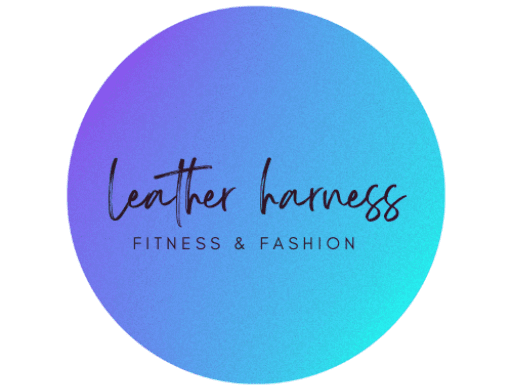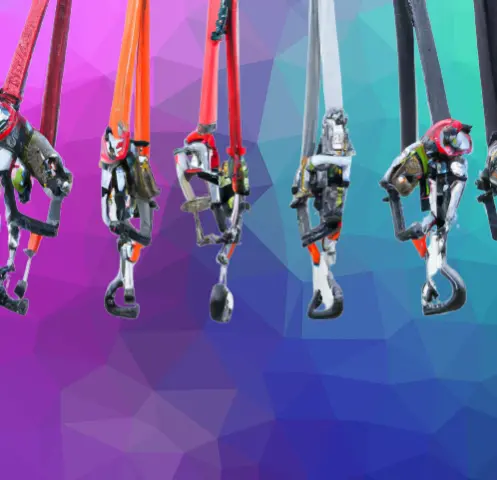An aerial harness is a piece of equipment that is used to support a person while they perform aerial acrobatics or other aerial maneuvers. It consists of a harness that is worn around the waist and thighs, with several attachment points for ropes or cables.
The harness is designed to distribute the weight of the person evenly across their body, allowing them to perform aerial tricks and stunts with ease and without causing injury.
Aerial harnesses are commonly used in circus performances, stage shows, and other entertainment events, and are an essential tool for aerial artists and acrobats. They are also used in a variety of other applications, such as construction, rescue, and military operations, where the ability to move freely and safely in the air is critical.
Types of Aerial Harnesses
There are several different types of aerial harnesses that are used for various aerial activities, including:
- Full-body harness: This type of harness covers the entire body and is typically used for activities such as rock climbing, rappelling, and rescue operations. It has multiple attachment points for carabiners and other equipment, as well as padding for comfort and support.
- Sit harness: A sit harness is designed specifically for activities that involve sitting, such as paragliding and hang gliding. It has leg loops and a waist belt, and may also have shoulder straps and a chest harness.
- Chest harness: A chest harness is a type of harness that wraps around the chest and is often used in conjunction with a full-body or sit harness. It provides additional support and stability and is often used for activities such as climbing, rappelling, and rescue operations.
- Leg loop harness: A leg loop harness is a type of harness that consists of leg loops and a waist belt. It is typically used for activities such as rock climbing and rappelling, and may also have attachment points for carabiners and other equipment.
- Aerial dance harness: An aerial dance harness is a type of harness specifically designed for aerial dance activities, such as aerial silks and trapeze. It is typically lightweight and flexible, and may have multiple attachment points for carabiners and other equipment.
Choosing the Right Aerial Harness
It is important to consider your skill level, the type of aerial equipment you will be using, and your personal preferences. Some things to consider when choosing an aerial harness include:
- Purpose: Consider the specific activity you will be using the harness for. Different types of harnesses are designed for different purposes, so be sure to choose a harness that is appropriate for the activity you will be participating in.
- Fit: It is important to choose a harness that fits well and is comfortable to wear. Look for a harness that is adjustable and has padding for added comfort.
- Safety: Safety should be a top priority when choosing an aerial harness. Look for a harness that is certified to meet industry safety standards, and make sure it has multiple attachment points and a secure buckle system.
- Durability: Choose a harness that is made from high-quality materials and is built to last. Look for a harness that has reinforced stitching and is designed for heavy use.
- Weight: If you will be carrying your harness with you on long hikes or backpacking trips, consider the weight of the harness. Look for a lightweight harness that is easy to pack and transport.
Using the Safely Aerial Harness
The harnesses are designed to be used safely, but it is important to follow proper safety guidelines to prevent accidents and injuries. Some safety tips to keep in mind when using this harness include:
- Read the instructions: Before using your harness, be sure to read the instructions carefully. Make sure you understand how to properly put on and adjust the harness, as well as how to attach and use any additional equipment, such as carabiners.
- Check for wear and damage: Before each use, inspect your harness for any wear or damage. Look for frayed or worn straps, loose stitching, and other signs of damage. If you find any issues, do not use the harness and replace it immediately.
- Adjust the fit: Make sure the harness fits properly and is adjusted to your size. Follow the instructions to adjust the waist belt, leg loops, and any other straps to ensure a secure fit.
- Attach carabiners: If you are using carabiners or other equipment with your harness, be sure to attach them properly according to the instructions. Make sure they are securely fastened and not twisted or damaged.
- Follow safety guidelines: When using your aerial harness, be sure to follow all safety guidelines and recommendations provided by the manufacturer. This may include wearing a helmet, following the proper technique when climbing or rappelling, and using proper hand and foot placement.
- Monitor your equipment: Regularly check your harness and equipment for wear and damage, and replace them as needed. Proper maintenance and care can help ensure your safety while using a harness.
Maintaining Your Aerial Harness
Proper maintenance of your aerial harness is important to ensure its longevity and continued safety. Some tips for maintaining:
- Store it properly: When not in use, store your harness in a dry, cool place away from direct sunlight. Avoid storing it in areas where it could be exposed to heat, moisture, or harsh chemicals.
- Clean it regularly: After each use, clean your harness by wiping it down with a damp cloth. Avoid using harsh chemicals or detergents, as these can damage the harness.
- Inspect it regularly: Check your harness for wear and damage on a regular basis. Look for frayed or worn straps, loose stitching, and other signs of damage. If you find any issues, do not use the harness and replace it immediately.
- Replace it as needed: Over time, all harnesses will eventually wear out and need to be replaced. If you notice any signs of wear or damage, or if your harness is more than a few years old, it is time to replace it.
- Follow the manufacturer’s instructions: Be sure to follow the manufacturer’s instructions for the care and maintenance of your aerial harness. This will help ensure that it stays in good condition and continues to provide the necessary support and safety while you are using it.
Conclusion
Aerial harnesses are a valuable tool for anyone practicing aerial arts. You can enjoy the benefits of aerial training and performance without worrying about accidents or injuries by choosing the right harness, using it safely, and properly maintaining it.

